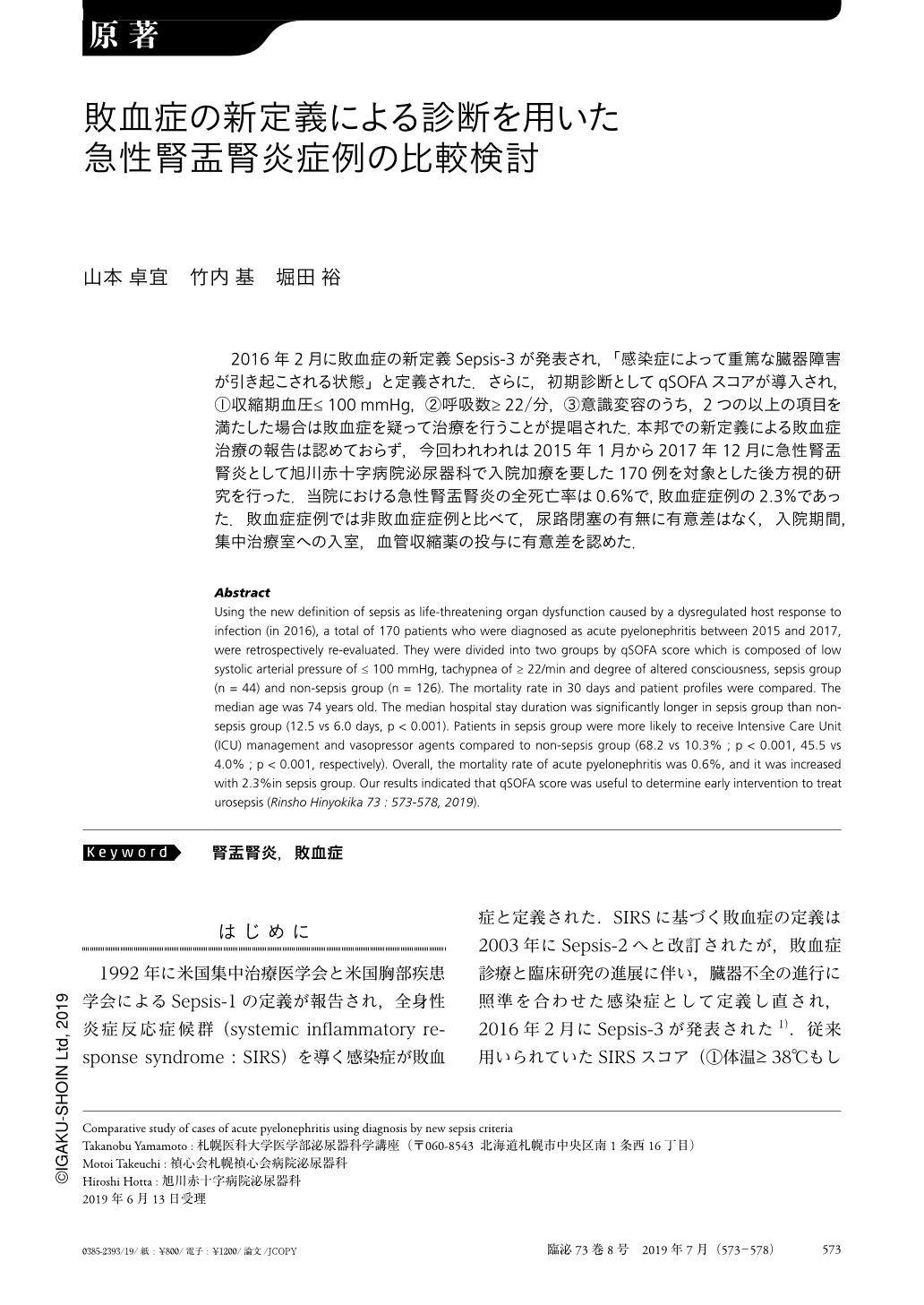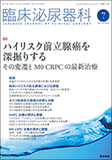Japanese
English
- 有料閲覧
- Abstract 文献概要
- 1ページ目 Look Inside
- 参考文献 Reference
2016年2月に敗血症の新定義Sepsis-3が発表され,「感染症によって重篤な臓器障害が引き起こされる状態」と定義された.さらに,初期診断としてqSOFAスコアが導入され,①収縮期血圧≦100mmHg,②呼吸数≥22/分,③意識変容のうち,2つの以上の項目を満たした場合は敗血症を疑って治療を行うことが提唱された.本邦での新定義による敗血症治療の報告は認めておらず,今回われわれは2015年1月から2017年12月に急性腎盂腎炎として旭川赤十字病院泌尿器科で入院加療を要した170例を対象とした後方視的研究を行った.当院における急性腎盂腎炎の全死亡率は0.6%で,敗血症症例の2.3%であった.敗血症症例では非敗血症症例と比べて,尿路閉塞の有無に有意差はなく,入院期間,集中治療室への入室,血管収縮薬の投与に有意差を認めた.
Abstract
Using the new definition of sepsis as life-threatening organ dysfunction caused by a dysregulated host response to infection (in 2016), a total of 170 patients who were diagnosed as acute pyelonephritis between 2015 and 2017, were retrospectively re-evaluated. They were divided into two groups by qSOFA score which is composed of low systolic arterial pressure of ≦ 100 mmHg, tachypnea of ≥ 22/min and degree of altered consciousness, sepsis group (n = 44) and non-sepsis group (n = 126). The mortality rate in 30 days and patient profiles were compared. The median age was 74 years old. The median hospital stay duration was significantly longer in sepsis group than non-sepsis group (12.5 vs 6.0 days, p < 0.001). Patients in sepsis group were more likely to receive Intensive Care Unit (ICU) management and vasopressor agents compared to non-sepsis group (68.2 vs 10.3% ; p < 0.001, 45.5 vs 4.0% ; p < 0.001, respectively). Overall, the mortality rate of acute pyelonephritis was 0.6%, and it was increased with 2.3%in sepsis group. Our results indicated that qSOFA score was useful to determine early intervention to treat urosepsis (Rinsho Hinyokika 73 : 573-578, 2019).

Copyright © 2019, Igaku-Shoin Ltd. All rights reserved.


